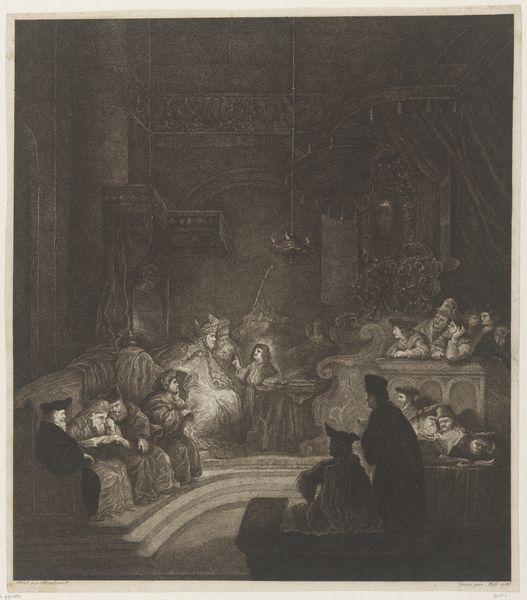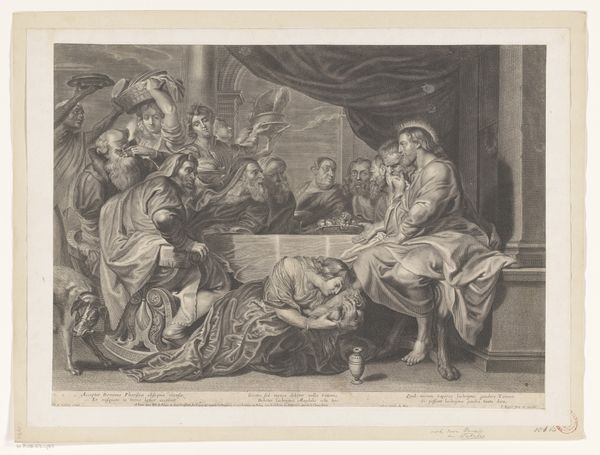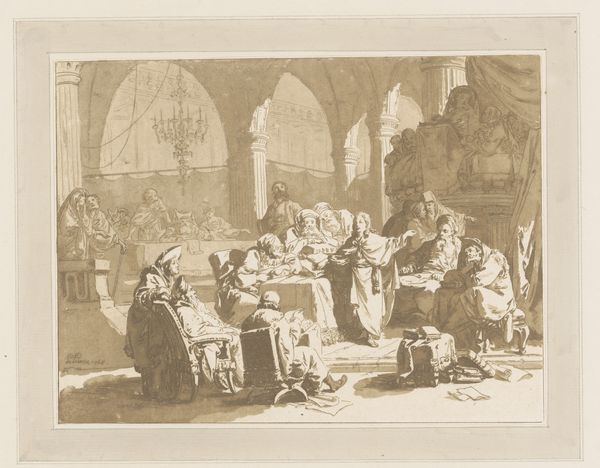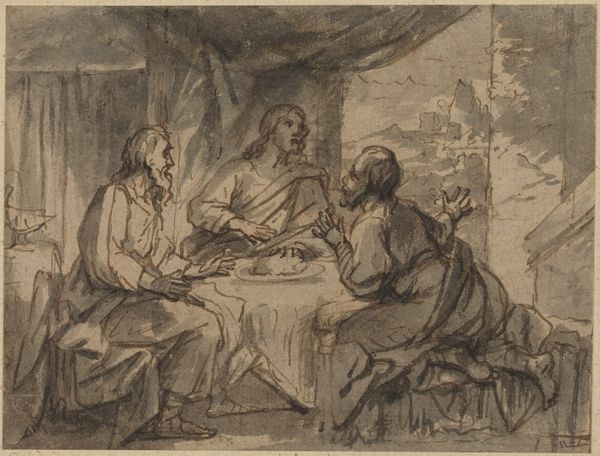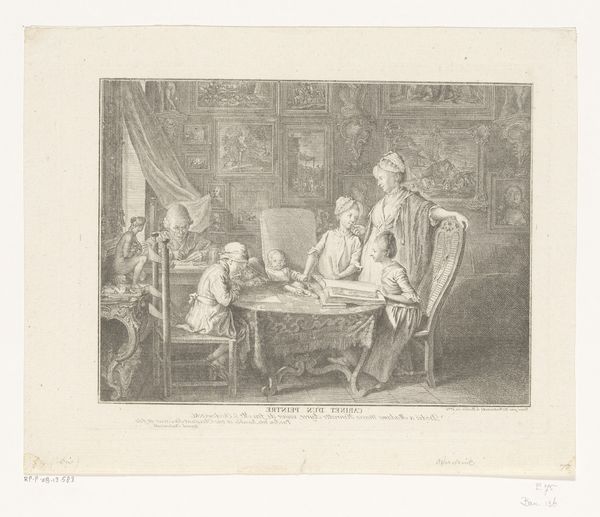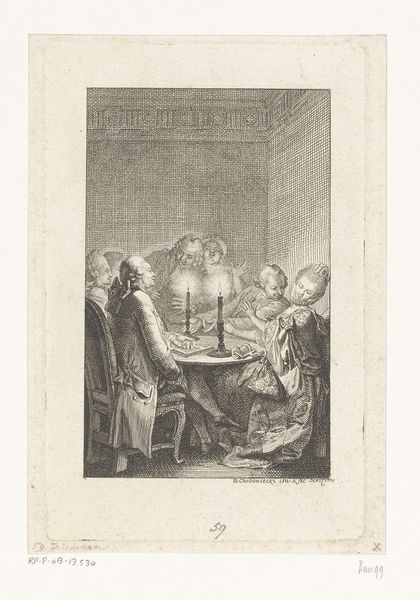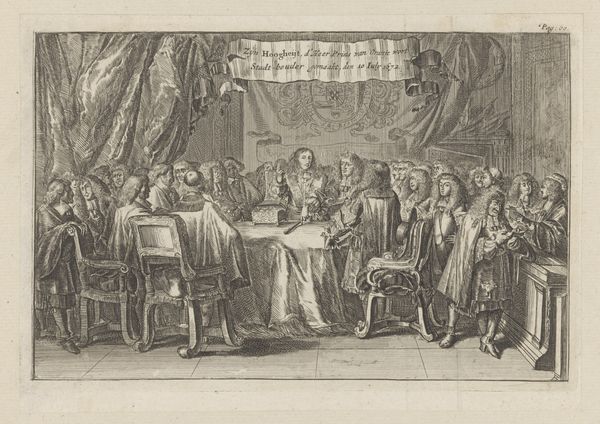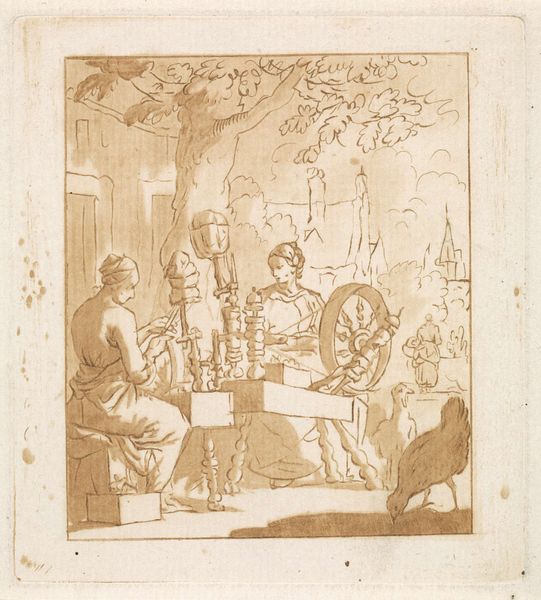
drawing, ink, pen
#
portrait
#
drawing
#
narrative-art
#
baroque
#
figuration
#
11_renaissance
#
ink
#
line
#
pen
#
genre-painting
#
history-painting
#
christ
Dimensions: sheet: 8 3/16 x 12 1/16 in. (20.8 x 30.6 cm)
Copyright: Public Domain
Curator: Here we have Claes Cornelisz. Moeyaert's, The Last Supper. Crafted between 1600 and 1655, this work uses pen and brown ink with brown wash on paper, a striking example of baroque draftsmanship currently residing here at The Met. Editor: It strikes me immediately as possessing an intense stillness despite depicting such a potentially volatile moment. The limited palette, almost monochrome, amplifies that somber feeling, wouldn’t you agree? Curator: Absolutely. Moeyaert’s piece is quite distinct in how it depicts this well-worn biblical scene. Most notably the figures seated atop the balcony. I can’t help but imagine that the men represent a higher body, religious and or governing who were presiding over Christ and the apostles at that moment in time. Editor: I agree, it makes me wonder what perspective Moeyaert sought to add by showcasing that upper balcony, especially, it subtly casts a light on notions of power, observation, and judgement. Considering his social circle within Amsterdam at the time I also feel this to be important to recognize and unpack. Curator: Precisely. He navigated complex social and political circles, which likely shaped his interpretation. Consider the Reformation's impact on religious imagery. Displaying art with religious context could then cause tension within society. This context allows us to analyze it not just as a drawing, but as a product of larger power dynamics. Editor: Looking at the way this work renders this religious scene in such muted colors it causes me to reflect upon identity in regards to shared experience and beliefs within a community and a possible shift, as one betrays, leading to an inevitable disruption of the group identity. Curator: Exactly, it mirrors broader concerns around faith, community, and the potential for dissent which is relevant today. Moeyaert, even centuries ago, seems aware of how socially delicate and crucial these scenes were to collective identities. Editor: His artistic commentary, steeped in history and challenging assumptions, remains profoundly insightful even now. Curator: I concur; Moeyaert's choice of depicting such a moment of crisis within a religion through use of line and shape alone offers such compelling perspectives that transcend time.
Comments
No comments
Be the first to comment and join the conversation on the ultimate creative platform.



